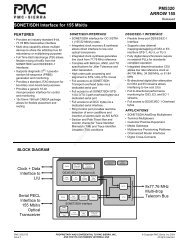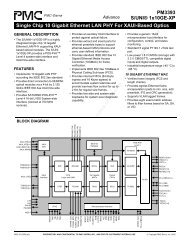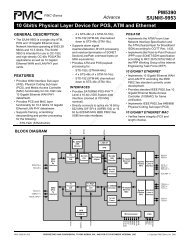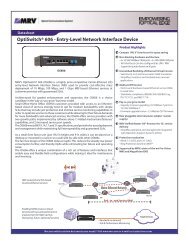Architecture, Engineering, and Related Services [NAICS 5413]
Architecture, Engineering, and Related Services [NAICS 5413]
Architecture, Engineering, and Related Services [NAICS 5413]
You also want an ePaper? Increase the reach of your titles
YUMPU automatically turns print PDFs into web optimized ePapers that Google loves.
different than architects. For engineers, the BIM solutions provide a way to connect the drafting,<br />
design, analysis <strong>and</strong> documentation processes in order to have a greater impact on project<br />
performance. For example, adopting the BIM approach could allow a civil engineer to more efficiently<br />
design what-if scenarios <strong>and</strong> create projections around factors such as performance <strong>and</strong> cost for road<br />
<strong>and</strong> highway design (Strafaci, 2008). BIM solution vendors such as AutoDesk <strong>and</strong> Graphisoft also<br />
produce products designed specifically for engineers. AutoDesk’s Revit line has three separate<br />
products for architectural design, MEP engineering (mechanical, electrical <strong>and</strong> plumbing) <strong>and</strong><br />
structural engineering.<br />
Engineers <strong>and</strong> contractors have actually been earlier adopters of BIM-enabled technologies, taking<br />
leveraging the benefits provided in the areas of scheduling, cost engineering <strong>and</strong> fabrication. The lag<br />
in adoption by architects has caused some challenges in aligning BIM activities between these<br />
groups. Vendors however, have responded to such issues by developing applications that are easily<br />
compatible. For example, civil engineers can use Autodesk’s Civil 3D software to define the<br />
topography for a site, which can then be imported into Autodesk’s Revit <strong>Architecture</strong> program, so<br />
that architects can create their designs using as accurate a representation of the building site as<br />
possible (MasterGraphics 2008).<br />
CONCLUSION<br />
<strong>Engineering</strong> services is an industry sensitive to the upswings <strong>and</strong> downturns of the economy. Since a<br />
substantial number of practitioners are small businesses, these entities will need to find cost efficient<br />
ways to differentiate themselves moving forward. Substantial investments in technology may not<br />
always be as feasible for smaller <strong>and</strong> medium sized businesses, but they are crucial to staying<br />
competitive in a quickly changing environment. Firms should try to uniquely position themselves by<br />
offering a variety of services which cater to their clients- a balance of diversity <strong>and</strong> specificity is key.<br />
REFERENCES:<br />
ASME (2012). About ASME. American Society of Mechanical Engineers. Available from:<br />
http://www.asme.org/about-asme<br />
IBIS (2012). IBISWorld Industry Report <strong>5413</strong>3 <strong>Engineering</strong> <strong>Services</strong> in the U.S.<br />
MasterGraphics (2008). Revit <strong>and</strong> Civil 3D Interoperability. Available from:<br />
http://www.mastergraphics.com/wordpress/wp-content/uploads/2008/05/microsoft-word-revitarchitecture-<strong>and</strong>-civil-3d-interoperability-_2009_.pdf<br />
QFINANCE (2012). <strong>Engineering</strong> Industry. Sector Profiles. Available from:<br />
http://www.qfinance.com/sector-profiles/engineering<br />
STEM Education Coalition (2012). Available from: http://www.stemedcoalition.org/<br />
Strafaci, A. (2008). What does BIM mean for civil engineers Available from:<br />
http://images.autodesk.com/adsk/files/what_does_bim_mean_for_civil_engineers_ce_news_1008.pdf<br />
8


![Architecture, Engineering, and Related Services [NAICS 5413]](https://img.yumpu.com/34014793/9/500x640/architecture-engineering-and-related-services-naics-5413.jpg)









